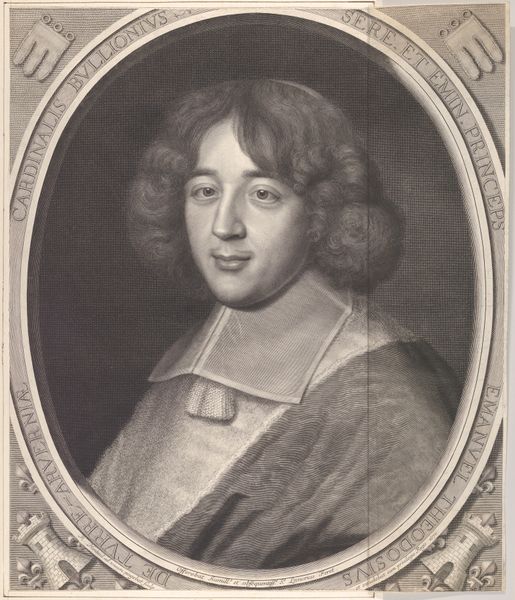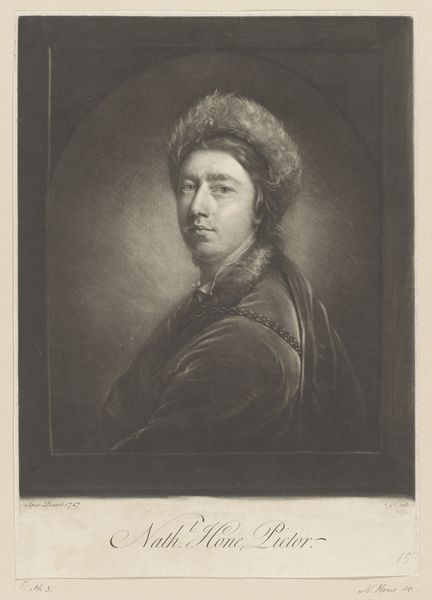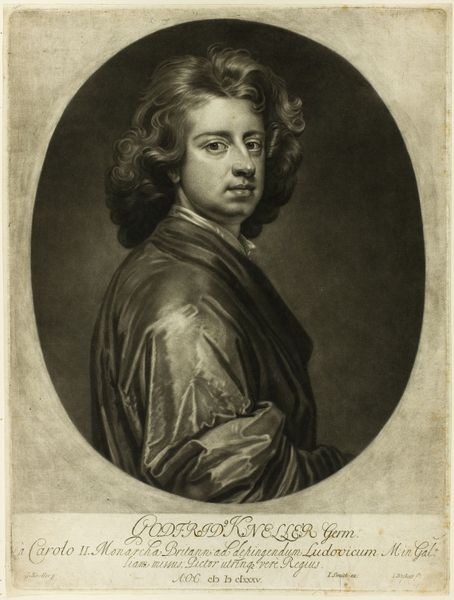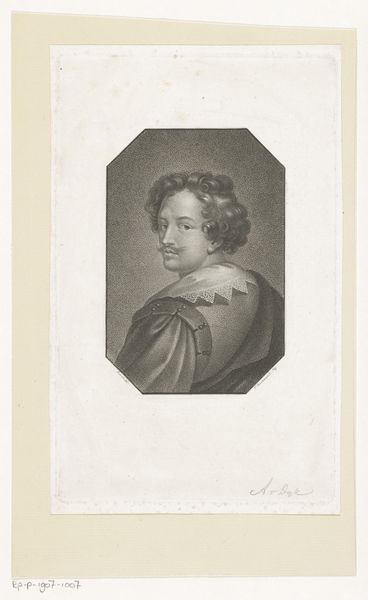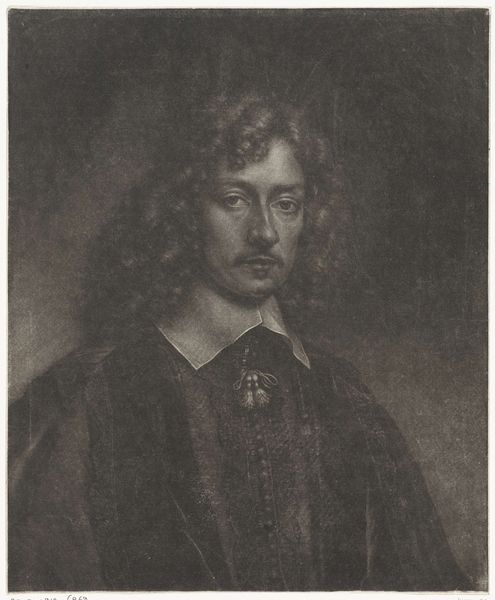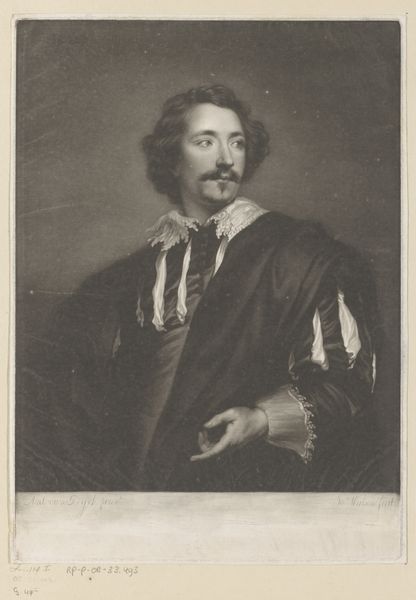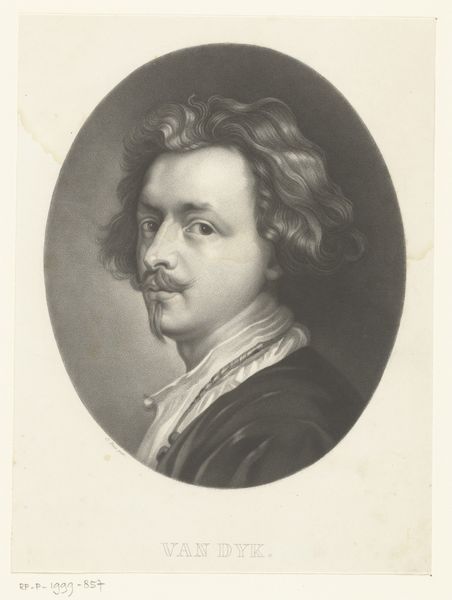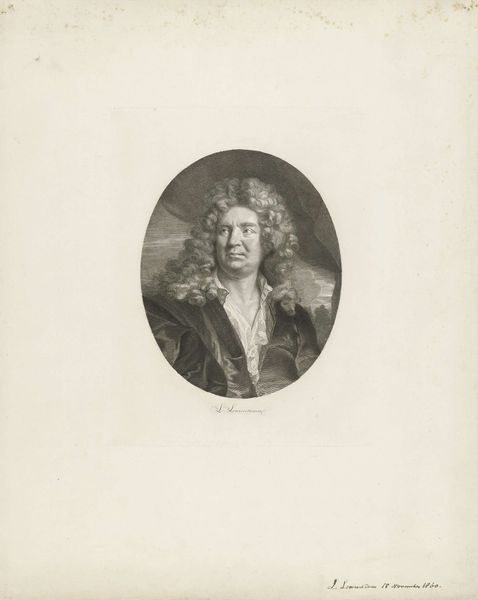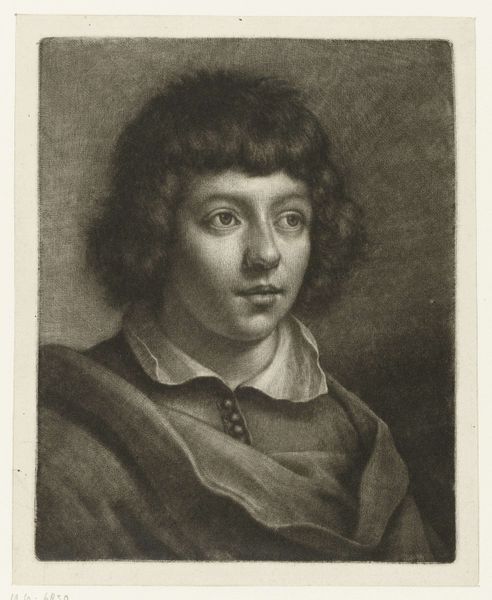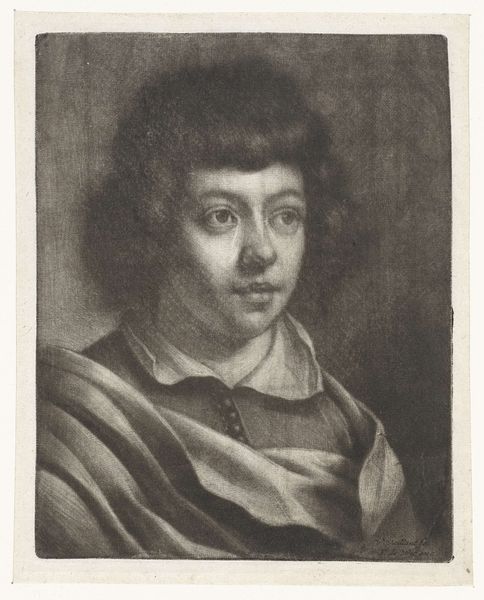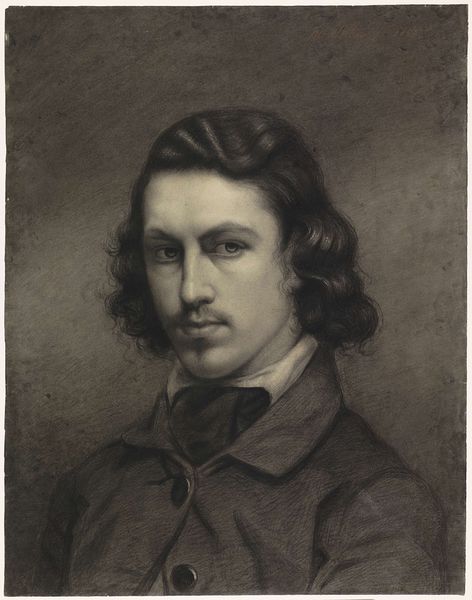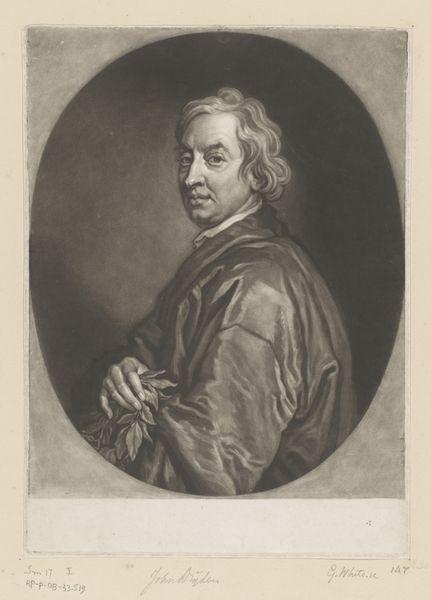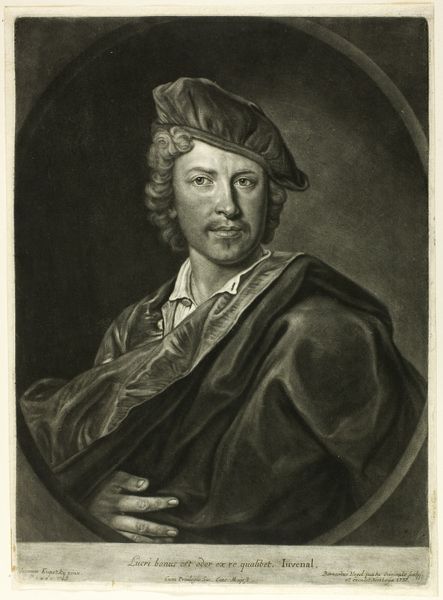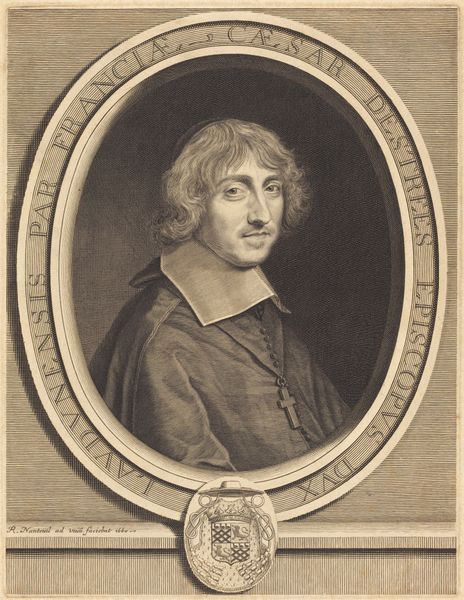
drawing, print, paper
#
portrait
#
drawing
#
neoclacissism
# print
#
paper
#
portrait drawing
#
history-painting
Dimensions: 408 × 315 mm (image); 457 × 315 mm (sheet)
Copyright: Public Domain
Curator: At first glance, this portrait seems remarkably gentle. It is, of course, a print; a mezzotint to be exact, of Sir Joshua Reynolds dating to around 1770, currently housed in The Art Institute of Chicago. Editor: Yes, the softness of the medium really stands out. You immediately notice how light plays across the velvety texture, almost mimicking the way light would fall on fabric. I wonder about the paper it's printed on. Was it specially made, to achieve this richness of tone? Curator: It’s fascinating how Reynolds, an established figure in the art world, would lend his likeness to a readily reproducible form such as a print. In his role as president of the Royal Academy he understood that accessibility was very important for artistic education. Editor: That's a crucial point. By allowing this image to circulate, Reynolds was strategically positioning himself, crafting his public image through a network of production and distribution. It's not just a portrait, but a conscious exercise in self-promotion, in brand building almost! Curator: The scale matters too. It isn't overwhelmingly large, making it quite intimate, which surely added to its appeal. Think about it; what a difference that makes to our interaction and the market forces involved. How many hands were part of making this accessible image? Editor: Precisely. Each print would represent not only artistic intention but also the economic realities for both its production and the circulation within various levels of 18th-century society. The dissemination is its key feature, isn’t it? Curator: Exactly! Consider the institutional validation, it being exhibited within prominent spaces. The accessibility this portrait facilitated truly blurs conventional boundaries. It makes one wonder where it would have been viewed: from domestic environments to possibly art societies... Editor: Reflecting upon the circulation of these prints shows a compelling interplay between commerce, the commodification of artistic identity, and, indeed, even democratic impulses shaping perceptions of high art during Reynolds’ lifetime. Curator: Looking at it through that framework has illuminated many aspects— thank you! It leaves one with an appreciation of how Reynolds understood his world. Editor: And now we get to take a deeper look, and encourage the next generation too, at his art! It's wonderful when these historical materials can continue sparking reflection within today’s conversations about art production and society.
Comments
No comments
Be the first to comment and join the conversation on the ultimate creative platform.
